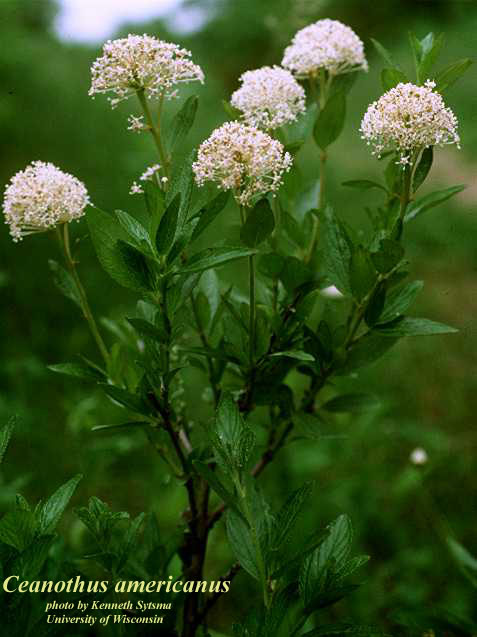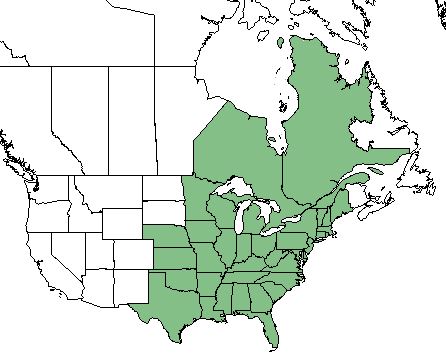Difference between revisions of "Ceanothus americanus"
(→Distribution) |
(→Description) |
||
| Line 22: | Line 22: | ||
Variety: none | Variety: none | ||
| − | ==Description== | + | ==Description== <ref name= "USDA"> [https://plants.usda.gov/core/profile?symbol=CEAM USDA Plant Database]</ref> |
| − | |||
<!-- Basic life history facts such as annual/perrenial, monoecious/dioecious, root morphology, seed type, etc. --> | <!-- Basic life history facts such as annual/perrenial, monoecious/dioecious, root morphology, seed type, etc. --> | ||
Revision as of 17:30, 18 May 2018
| Ceanothus americanus | |
|---|---|

| |
| Photo by the Atlas of Florida Plants Database | |
| Scientific classification | |
| Kingdom: | Plantae |
| Division: | Magnoliophyta - Flowering plants |
| Class: | Magnoliopsida - Dicots |
| Order: | Rhamnales |
| Family: | Rhamnaceae |
| Genus: | Ceanothus |
| Species: | C. americanus |
| Binomial name | |
| Ceanothus americanus L. | |

| |
| Natural range of Ceanothus americanus from USDA NRCS Plants Database. | |
Contents
Taxonomic Notes
Synonyms: Ceanothus intermedius (Pursh)
Variety: none
==Description== [1]
Distribution
While it is more commonly found along the coastal plains of the eastern United States and Canada, C. americanus can be found inland as far west as Louisiana. [2]
Ecology
Habitat
Conservation and Management
Cultivation and restoration
Photo Gallery
References and notes
- ↑ USDA Plant Database
- ↑ Weakley, A. S. (2015). Flora of the Southern and Mid-Atlantic States. Chapel Hill, NC, University of North Carolina Herbarium.